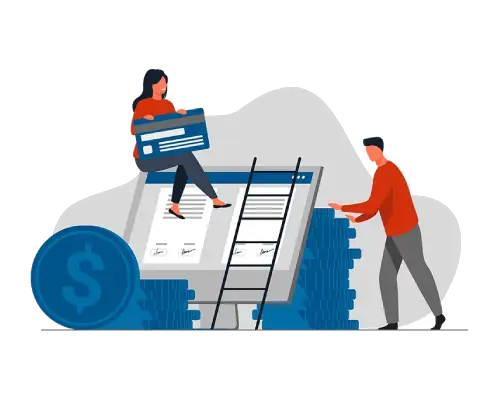Synopsis
The WTO enunciates that 80-90% of world trade is dependent on Trade Credit. Even though Trade Credit (or Credit Management) is a cornerstone of a business, one of the five small and medium-sized companies faces business bankruptcies because the client default on payments. Credit Controllers lack data analysis and control over finances, resulting in heavy cash outflow. Although RPA has made a way into the finance sector, trade credit remains aloof from RPA implementation. The Trade Credit process is highly infected by the preponderance of manual data entry and collation, consuming a lot of employees’ time. However, there’s great scope for RPA implementation in the Credit Management process. Credit Management automation benefits organizations by removing mundane tasks, reducing errors, improving average handling time, and delivering real-time data analysis.
About the Client
Our client is a giant in the Fast-Moving Electrical Goods (FMEG) space. They are India’s most trusted brands, and with extensive geographic footprints, the company enjoys unparalleled goodwill and recall. The client deals in various electrical and power distribution equipment products such as switchgear, cables and wires, motors, water heater, fans, commercial and industrial applications and more.
Key Issue
For our client, manually maintaining the Credit Management was effortful and arduous. They faced several challenges due to the incompetency of manual processing. The business leaders failed to gain real-time data insights to make timely decisions. The client needed an automated Credit Management solution to streamline their process, increase productivity, make decisions, and remain competitive in the market.
Our Solutions
The client sought to revamp its Credit Management process using RPA solutions. They initiated their digital journey with its digital partner, RPATech and consulted us on digitally transforming and streamlining their process with Credit Management automation. Using our in-house methodologies—D3OTM and AugurDTM—we analyzed and understood the client’s business process, identified bottlenecks, and created a well-coordinated workflow to optimize overall business performance. We recommended using the UiPath platform, customized an RPA Bot on the UiPath platform, and deployed the Bot into the client’s process.
The workflow included four processes: Payment Upgradation, Bill Discounting, Payment Upgradation, and Bill Posting.
- Payment Upgradation: The first phase of end-to-end Credit Management automation involves updating payment records using the data extracted from the bank portals into the SAP application. The Bot initiates payment upgradation for the first time in a day. This process entails monitoring and controlling the credit limit allocated to each dealer as per the client’s business rules. The workflow automation begins with the Bot logging into three different bank portals and downloading respective bank statements. Upon downloading the bank statements, the Bot extracts the data from the Excel sheet and creates a Payment Update sheet using the fixed pre-defined format. Next, the Bot accesses the SAP application and uploads the filtered data.
- Bill Discounting: The next phase includes providing discounts on the bill to each dealer as per the client’s business rules. The credit limit to the dealers is allocated under the low-interest rate that the bank agreed to offer our client.
- Payment Upgradation: Upon discounting the bills of each dealer according to their agreed credit limit, the Bot updates payment in the SAP application. The client provided us with a ‘base sheet’ for payment upgradation, updated after provisioning them with the discount.
- Bill Posting: In the last phase of Credit Management automation, the Bot posts bills in the SAP after provisioning discounts on the bills. Lastly, the Bot sends the consolidated Excel sheet via email to the delegated person.
Automation Benefits
Our bespoken solutions offered to the client helped them unlock the following business benefits:
- Turnaround time reduced by 70%.
- 80% reduction in manual handling.
- 100% accuracy rate.
- Zero error rates.
- Overall productivity improved.
- Gained visibility and control.




